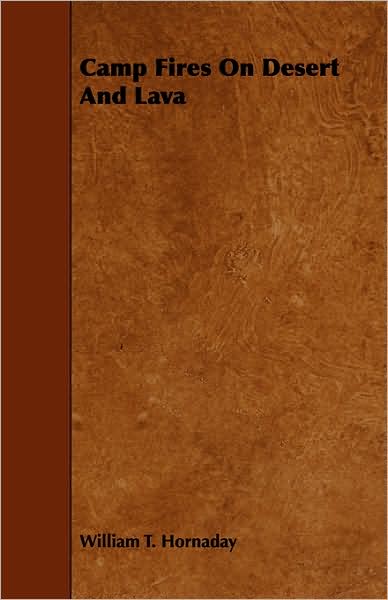
Tell your friends about this item:
Camp Fires on Desert and Lava
William T Hornaday
Camp Fires on Desert and Lava
William T Hornaday
Publisher Marketing: PREFACE PRIMARILY, the expedition described in the following pages was an exploration of a genuine terra incognita. While it is true that the Pinacate region was known to a few Papago Indians and perhaps half a dozen Mexicans, to the reading and thinking world it was totally un-known and the more we gathered maps and inquired about it, the less we knew. On all available maps the space around the Pinacate dot was a blank, and usually the dot itself was far out of place. There was not a soul who knew enough about the country to say lava. Naturally, the animal and plant life of the Pinacate region was as much unknown as its geography hence our combination of botanist, zoologist, sportsman, and geog- rapher. In any wild country, that is a good hand to draw to, and with the three jolly good fellows whose company I shared, I could enjoy exploring any country this side of the Styx. Indeed, I would take my chances with them beyond it. Ever since it was my good fortune to see the Rocky- Mountain big-horn at its culminating point in British Columbia, I had been keenly desirous of studying that species at the point where its progress southward is stopped by fierce heat, and scanty food and water. It seemed to me that in the Pinacate region we might in all probability find one of the jumping-off places of the genus Ovis in North America which we did. Much depends upon the point of view. No man should make the mistake of exploring a desert in hot weather. It is equalled in folly only by the exploration of the polar regions in winter. A hard season always begets unreasonable prejudices in the mind of the observer. The choice of companions also has very much to do with the point of view. Dont visit any desert under the handicap of Indian guides. They are enough to depress the spirits of a barometer and some of them will even abandon you in the wilds Go with from one to six good white men, with red blood in their veins, or postpone the event. Of the books that I had read previous to my desert experience, not one gave me a clear-cut and adequate impression of southern Arizona. Of the northwestern corner of Mexico, practically nothing had been written. I based my expectations upon existing records-and never was more surprised in a country. This book represents an effort to show the Reader a strange, weird, and also beautiful country as it looked to me. I did not sample the terrors of the deserts. The seamy sides of lands and peoples do not attract me. I have little patience with travellers who are eternally getting into scrapes, and having heart-rending sufferings and adventures. In all save the wildest of the wild regions of earth, such doings indicate bad judgment and a lack of the Sawey of the Trail which every explorer and sportsman should possess. It is possible for men to have terrible experiences anywhere. Men have been frozen to death in the streets of New York, and very recently others have perished miserably in the New Jersey marshes, within sight of hundreds of electric lights. The deserts have their dangers also-for men who ignorantly and rashly rush into them but in any country the best travellers are those who know how to do their work and avoid such things. In November, southern Arizona is fascinating, no less... Contributor Bio: Hornaday, William T Born in 1854, this Indiana farm boy was to become one of the Nation s most eloquent leaders in the protection of wildlife. His early interest was in scientific taxidermy. He founded the National Society of American Taxidermists in New York in 1880. He was appointed chief taxidermist of the U. S. National Museum in Washington, D. C. Later, as director of the New York Zoological Society, he supervised the building and administration of the Bronx Zoo. He wrote hundreds of newspaper and magazine articles and over 20 books in the field of conservation. He was a leading influence in the passage of the Migratory Bird Treaty Act and the 1911 Fur Seal Treaty. But his greatest victory was probably his successful fight to preserve the American bison from extermination.
| Media | Books Paperback Book (Book with soft cover and glued back) |
| Released | October 6, 2008 |
| ISBN13 | 9781443759991 |
| Publishers | Maurois Press |
| Pages | 496 |
| Dimensions | 140 × 216 × 28 mm · 621 g |
More by William T Hornaday
See all of William T Hornaday ( e.g. Paperback Book and Hardcover Book )




















